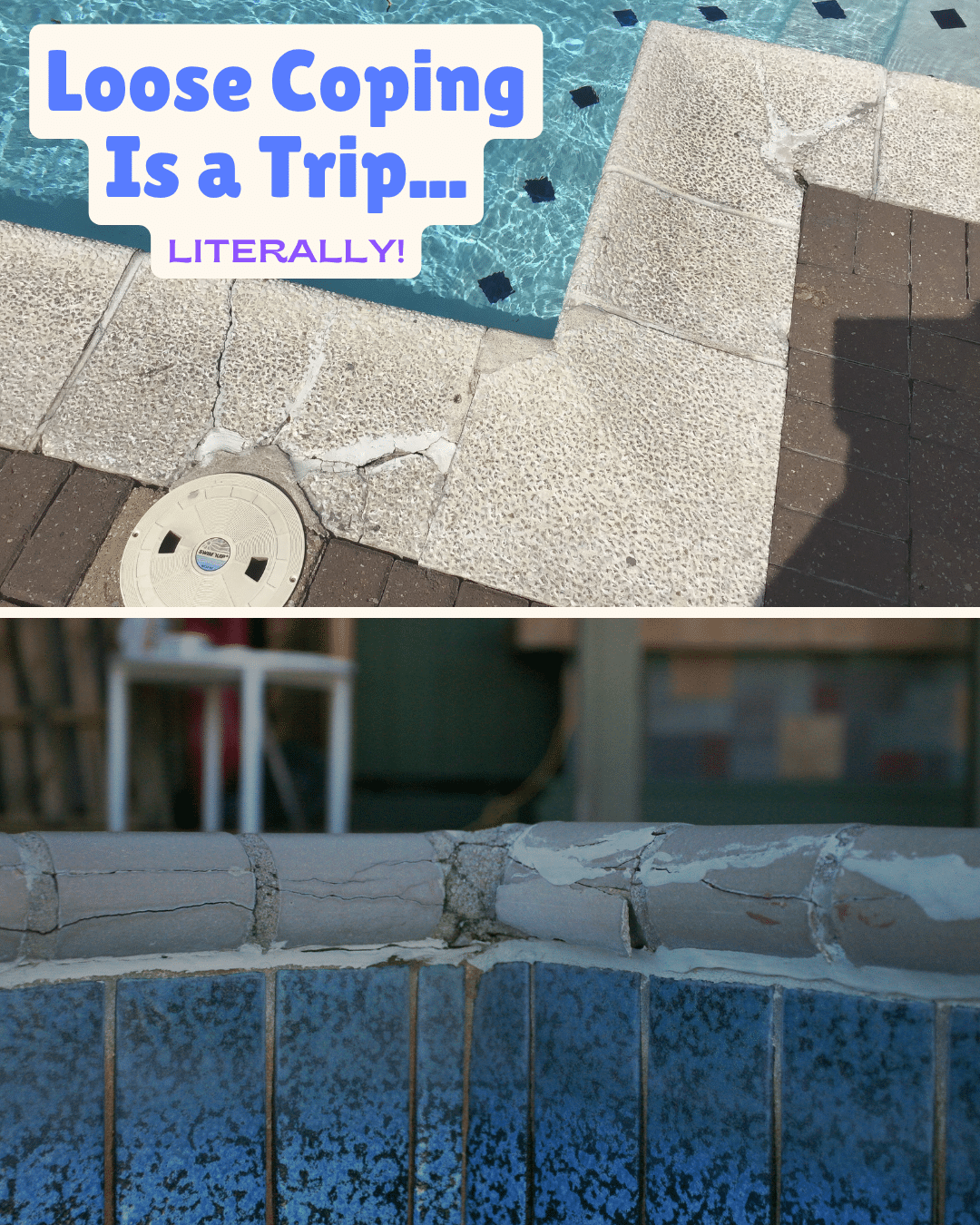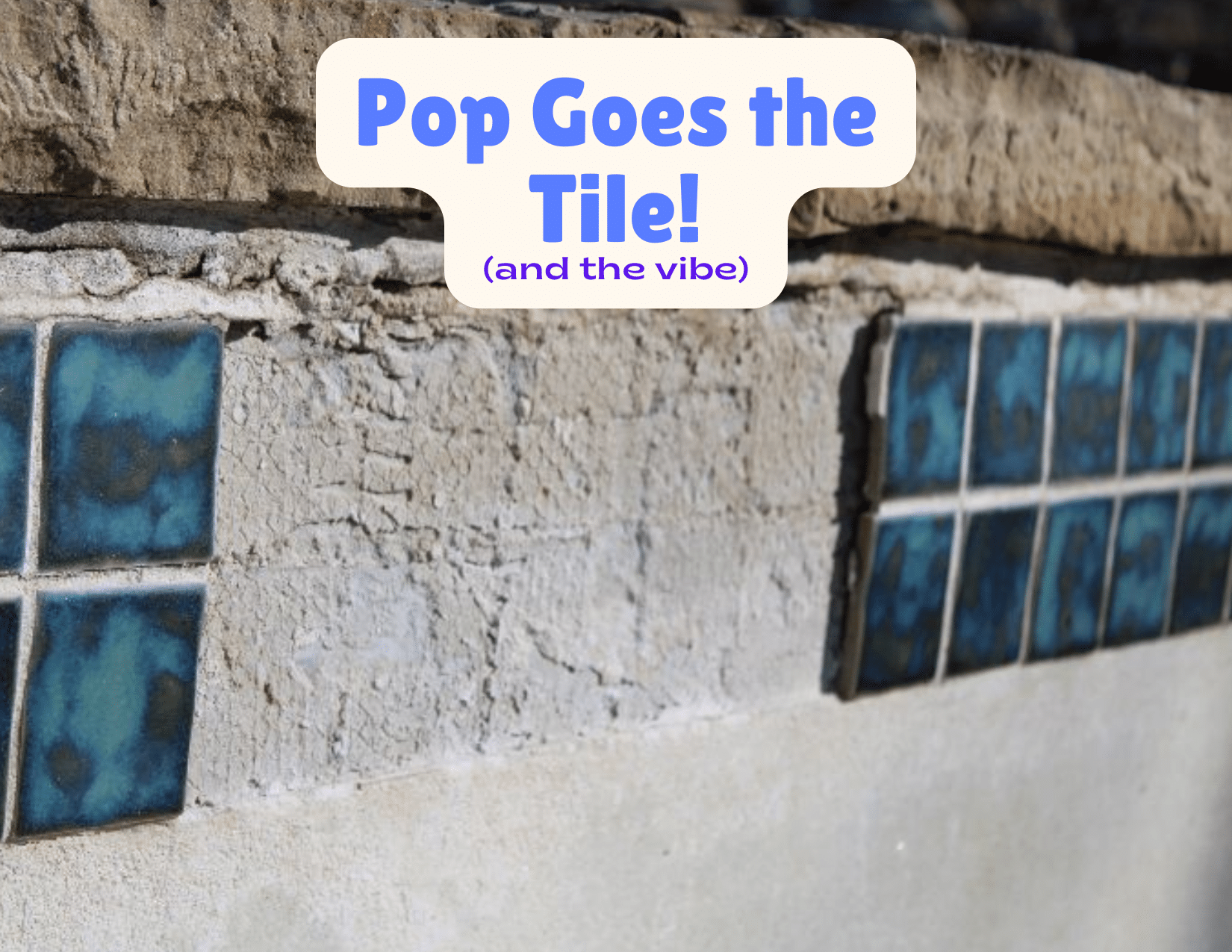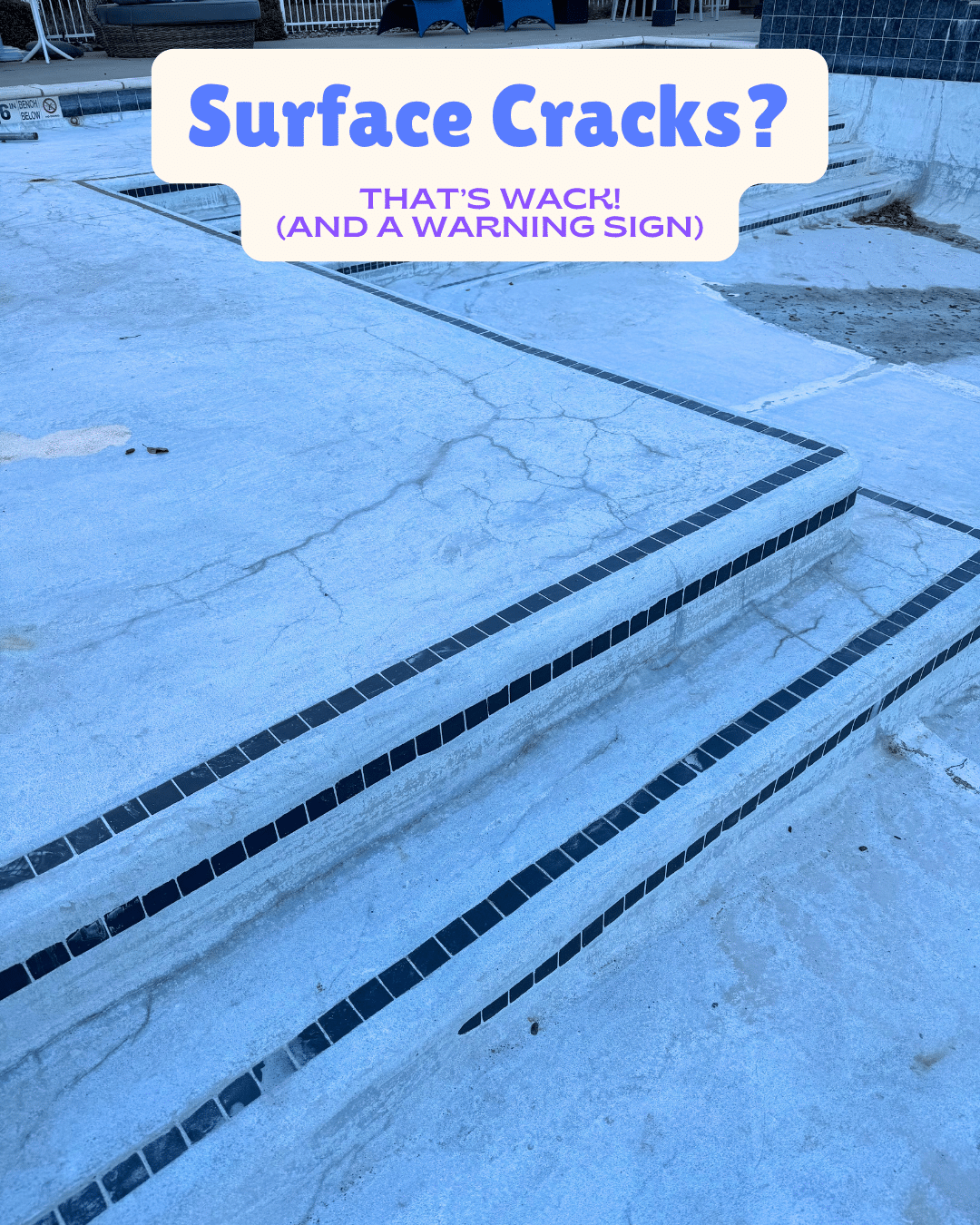Should You Repair or Renovate Your Pool This Season?
You’ve soaked up the sun, hosted the pool parties, and survived a summer of cannonballs and sunscreen. But now that pool season is winding down, it’s the perfect time to take stock of how your pool held up.
Whether you’re dealing with cracked tiles, rough plaster, or stains that won’t go away, this guide will help you figure out if a quick fix will do, or if it’s finally time for a full pool renovation.
Here are five common issues and places to evaluate to see if your pool needs a little work or a complete overhaul.
1. Your Coping Is Cracked, Loose, or Looking Worn
If your pool coping needs replacement because it’s cracked or shifting, it’s not just annoying, it can be a safety hazard.
Quick Fix: If the cracks are small and more of an eyesore than a hazard, you can likely repair or replace small sections without tearing everything out.
Time to Renovate: If your coping is crumbling, shifting, or turning into a toe-stubbing obstacle course, it’s time for a full replacement. Safety first, style second (but it’s a close second).
2. The Surface Is Rough Enough to Double as Sandpaper
A rough pool surface can turn your relaxing swim into a really painful experience. Aging plaster, chemical erosion, and acid washing can all cause this problem.
Quick Fix: We hate to break it to you, but there really isn’t one. Paints and patches might buy you time, but they don’t hold up long-term.
Time to Renovate: If your pool surface is scraping up feet or snagging swimsuits, resurfacing is the only way to bring back that smooth, swimmable goodness.
It’s important to note that even brand-new pools can cause ‘strawberries.’ Those annoying little scrapes on feet are super common at the start of a swim season. After a winter in soft, cushy shoes, the tough skin built up from last summer has softened. Add in pruny, waterlogged feet rubbing against a cement-like surface all day, and it’s a recipe for red, tender tootsies. Try wearing water shoes or limit pool time until your feet adjust.
3. You’ve Got Tile Drama
Tile issues can be a simple fix or a sign you need to rethink your entire pool’s look. Over time, water can sneak between the tile and the pool shell, slowly breaking down the tile bed underneath. That’s when tiles start popping off. One way to see if your tile bed is in trouble is to tap on your tiles. If they sound hollow, they’re likely on their way out and it’s not a matter or if, but when.
Quick Fix: A few missing or loose tiles? Grab some adhesive, this is our favorite, but it’s likely it will continue to happen and keep spreading.
Time to Renovate: If tile issues have become your pool’s yearly tradition, it’s time to quit patching it back together and retile the whole thing. Constant repairs lead to hidden costs that really add up.
Get the most out of your tile by maintaining the caulking joints above the tile and the one between the tile and the coping. These joints are designed to move, so caulk (which is flexible) works best. If you’ve got mortar or grout in those joints they can crack over time, letting water in and starting the whole cycle again.
4. Stains That Won’t Quit
If your pool interior looks like your kid’s failed tie-dye project from summer camp, you’re not alone. These stains are often caused by metal deposits, organic debris, or even minerals in the water.
Quick Fix: Some stains can be treated with a professional acid wash. See our full guide on getting rid of pool stains for good.
Time to Renovate: If they keep coming back, or if the stains are deeply set, resurfacing is your best bet for a fresh, clean slate.
5. Cracks That Keep Growing
One thing you can count on with concrete is that, sooner or later, it will crack. A few small cracks are normal and can be patched. But if you’re seeing larger, deeper cracks (especially ones you can stick a finger in, yikes), there’s a bigger issue at play. Cracks can come from dried-out plaster, shell movement, or just good old-fashioned aging.
Quick Fix: Patch small cracks to get through the season. Use this putty to seal the crack and prevent water from seeping in.
Time to Renovate: Deep, widespread cracks are a sign it’s time to invest in a long-term solution like a resurfaced, structurally sound pool.
Consider Pool Resurfacing Costs
Knowing when to renovate your pool versus opting for a quick fix can save you money in the long run and stress down the line. Small repairs help tide you over but can be costly year after year. A full renovation might be the best choice for long-term enjoyment and safety.
Not sure what your pool needs? Get a no-string-attached, free quote. We’ll take a look, walk you through your options, and help you get that pool sparkling again.




